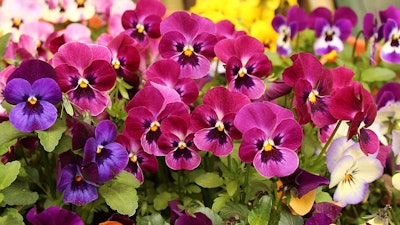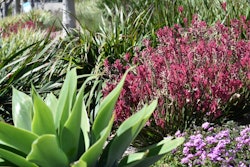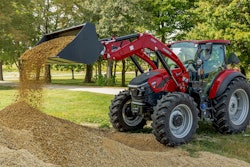 The cool weather is exactly what pansies prefer, and they are one of the best flowers to plant in spring for early-season containers and window boxes.
The cool weather is exactly what pansies prefer, and they are one of the best flowers to plant in spring for early-season containers and window boxes.Photo: Pixabay
Coming out of the harsh, cold weather can sometimes be traumatic for lawns that might have been overlooked during winter. But never fear; a few simple tips can get your customers’ lawn back on track and ready for spring.
Appropriate mowing habits
Many consumers are under the impression that in order to keep their lawns looking as high quality as possible, they have to mow it as much as possible; not true. While mowing a lawn is necessary to properly maintain the look and health of the landscape, many believe that the shorter the grass is cut the less frequently it must be mowed.
Experts from the National Association of Landscape Professionals (NALP) say to check the appropriate mowing height for a species of grass, but in general, never cut more than one-third of the grass leaf at a time.
It’s important to mow lawns to the appropriate suggested height (2 ½ – 3 inches) in order to promote root growth, control emerging weeds and retain soil moisture. Cutting it shorter could get rid of the photosynthesizing cells needed for active growth, so pay attention to details, especially on how often clients’ lawns should be mowed.
Also remember to keep mower blades sharp. Dull blades can cause brown, frayed grass tips that are more prone to disease.
Hydration is key
Another common landscaping misconception deals with watering (and overwatering). The phrase, “More is better,” doesn’t apply in this situation.
If your customers want to keep their grass growing thick and healthy, watering on a regular basis is imperative. However, it’s important to observe the appropriate amount of water required by the plants or lawn.
Overwatering can lead to a shallow root system, which can hinder future growth and allows lawn fungus and disease to germinate. Watering less often but in greater amounts can lead to the formation of a deeper root system and the healthy lawn homeowners crave. NALP states that overwatering kills as many plants as lack of water.
Many consumers also believe that it’s okay to go all through winter without ever watering their lawns. As temperatures drop, plants still require hydration and moisture. Winter is typically the driest time of the year, and dehydration can cause more damage to their plants than the cold.
Inform customers they should provide plants with water only if the temperature rises above 40 degrees or if there is no snow or ice on the ground. It is also highly recommended to water plants in the morning so that water can seep into the root system and the turf before the temperature drops at night.
In with the new
Since we are heading into spring, why not give the flower gardens a fresh look by planting cool-season annuals such as pansies, snapdragons, calendulas and linaria? Other popular options are lilacs, summer snowflake and daffodils, and selecting already-blooming flowers for some instant color.
The cool weather is exactly what pansies prefer, and they are one of the best flowers to plant in spring for early-season containers and window boxes. For optimum growing conditions, be sure to plant them in the sun or a partially shaded area with moist, well-drained soil. They can typically grow up to 10 inches tall and about 12 inches wide, and thrive in zones 4-8.
Known to some as the ‘bell flower,’ the summer snowflake is a perfect addition to borders and rock gardens and inserts a hint of delicacy with its drooping blooms. For more of a focal point, plant several of the plants together, and be sure they are planted in full sun with well-drained soil. Summer snowflakes typically reach three feet tall and one foot wide, and thrive in zones 4-9.
Lilacs can not only add a beautiful pop of color to your yard, but they also emit a sweet fragrance that epitomizes the idea of spring. Lilacs can vary in shapes, sizes and colors, and typically bloom on old wood. Lilacs enjoy full sun and well-drained soil, can grow to be 20 feet tall and wide and thrive in zones 4-8.
Removing unwanted pests
The grand finale for getting customers’ lawns and gardens together for spring is keeping it free of pests, whether you actually see them there or not. A common misconception is that winter kills off all pests. Some clients may think there’s really no reason to keep up pest control during winter, but this can lead to some unwanted guests come springtime.
“Not only are pesticides necessary, they work to protect people from potential diseases and other health issues by reducing the populations of insect pests that spread disease and cause illness,” says Karen Reardon , director of communications for Responsible Industry for a Sound Environment (RISE).
Be sure to do your research on which pesticides you use, and always carefully follow directions on each product; if used correctly, pesticides pose no threat to you, your clients or their pets. All pesticides are scrutinized by the Environmental Protection Agency.
“Only products determined to have a reasonable certainty of no harm to the environment or human health can be registered by EPA,” Reardon says.
Urge clients not to wait for pests to start popping up before they call you to treat their lawn. Preventative measures can save both of you a lot of time, money and headaches, dealing with an insect infestation is far more costly and time consuming than preventing one.
Regardless of the season, maintaining a healthy and beautiful landscape is a year-round process, so be sure to get a jump on good lawn care as early as possible.











